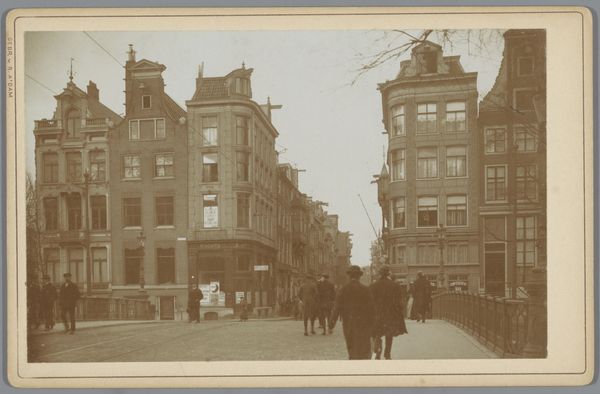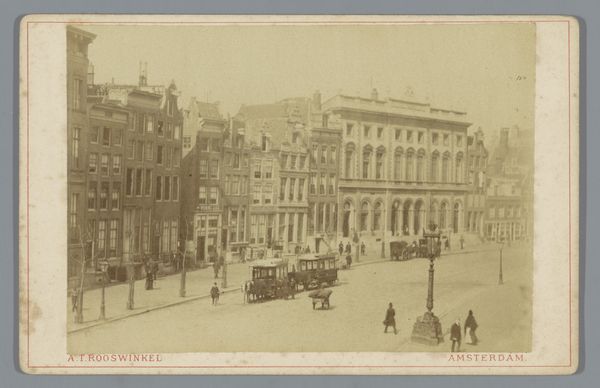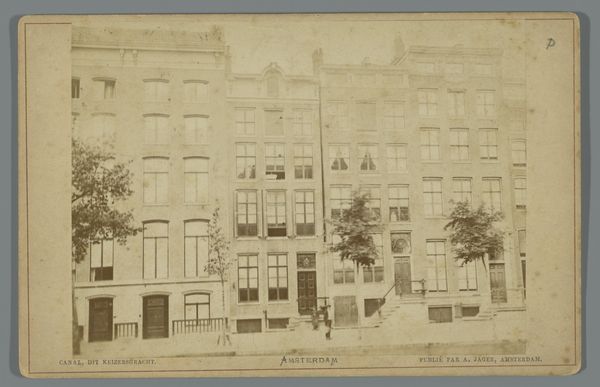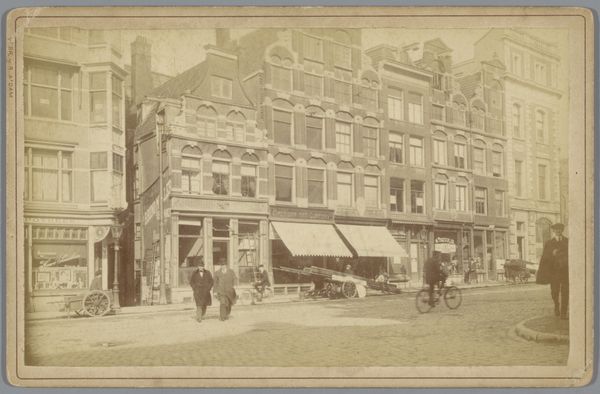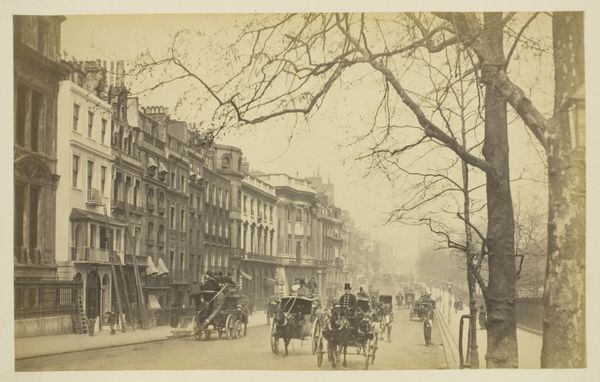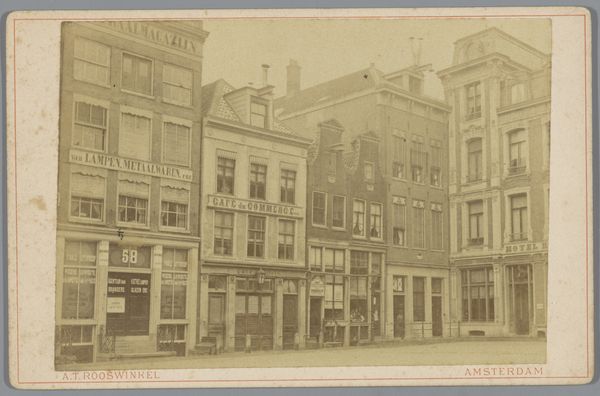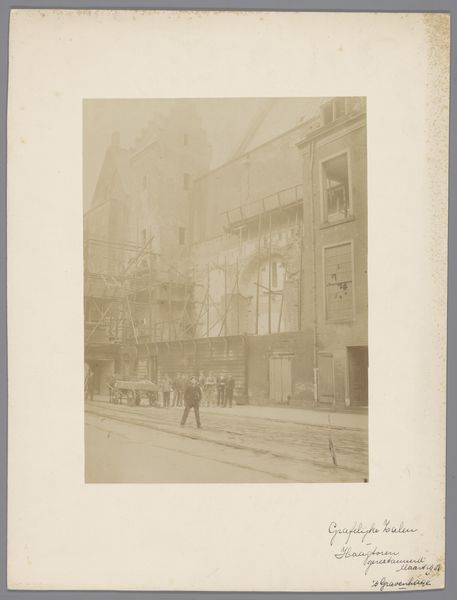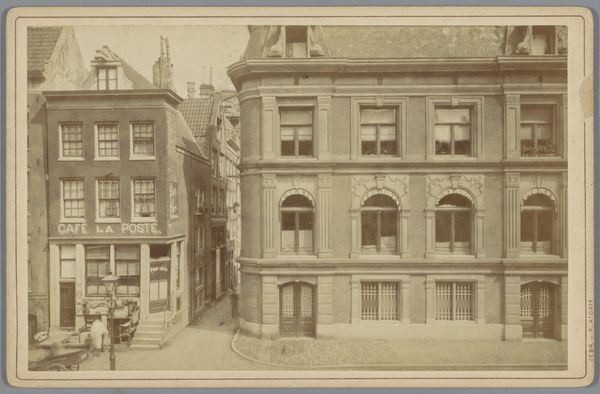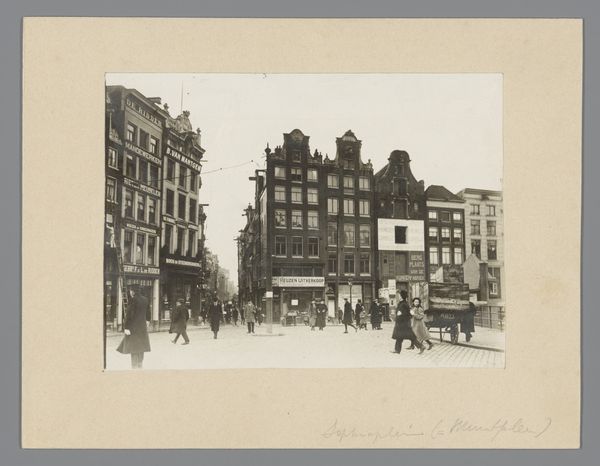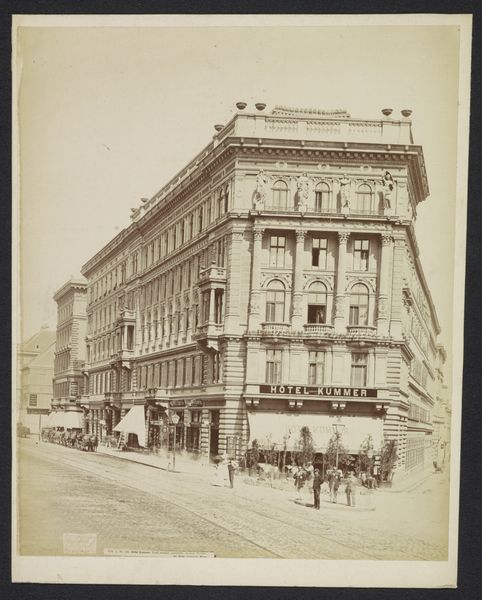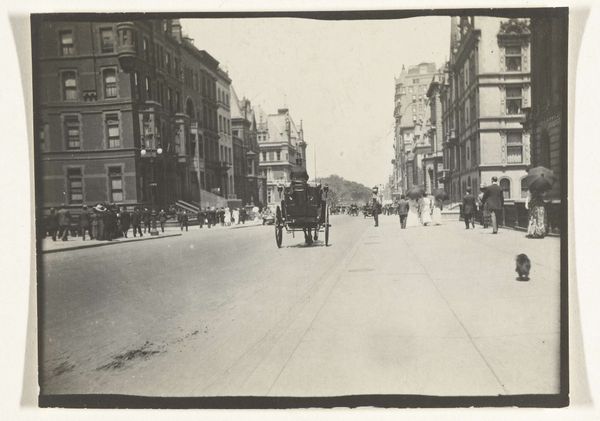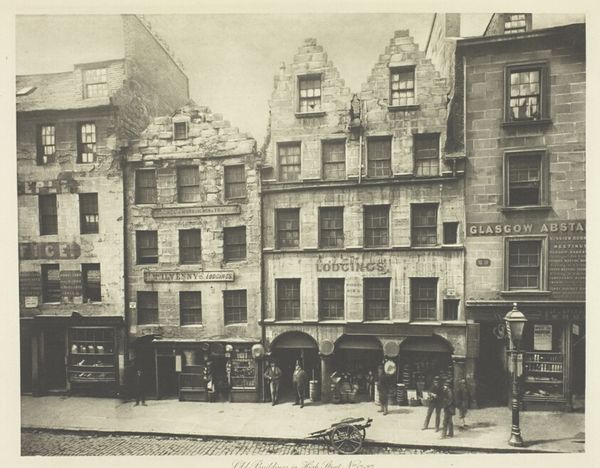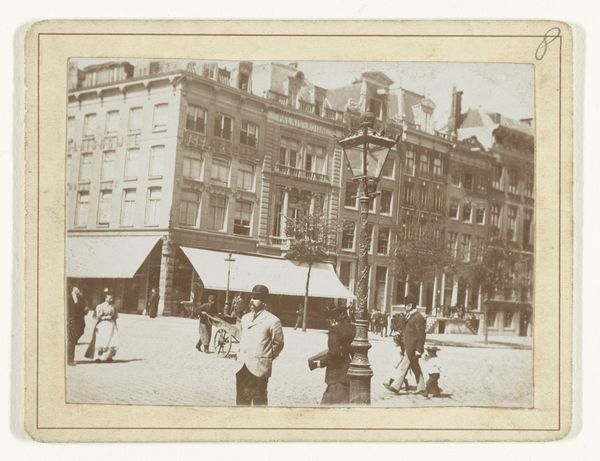
photography
#
dutch-golden-age
#
historic architecture
#
photography
#
historical photography
#
historical fashion
#
cityscape
#
street
#
realism
Dimensions: height 92 mm, width 153 mm
Copyright: Rijks Museum: Open Domain
Curator: What a wonderful piece to discuss. This vintage photograph, titled "Gezicht op de Herengracht en Vijzelstraat in Amsterdam," likely taken between 1880 and 1900 by Gebr. van R., really captures a specific moment in time. Editor: It's a melancholic scene, wouldn't you say? That sepia tone, the veiled light... there’s a stillness that feels both inviting and a little lonely. The weight of history is palpable, isn't it? Curator: Indeed. Sepia, or brown monochrome prints like this one, was an advancement meant to replicate a more realistic rendering of shadows as the silver-based printing process improved, giving way to fewer reddish brown tones. Look how it softens the architectural lines of those classic Dutch buildings. Their familiar shapes take on an almost dreamlike quality, no? Editor: The very definition of what some now call "golden hour." Yet, for me, that aesthetic quality speaks of a specific narrative: the urbanization, of course, but also a social structure. Look at the dress of the figures on the street, almost ghostly, suggesting the constraints of 19th-century society. Curator: Notice the careful detail, even within the limits of the photographic technology of the time. The lines of the buildings receding into the distance, the signage above the shops, the silhouettes of figures, each of these evokes an atmosphere, as it also contributes to its role in preserving local cultural memory. Editor: I find myself contemplating the absence of women here as well. There is one prominent figure, seemingly alone. Is that an accurate portrait, or are we seeing only part of a social tapestry, shaped as much by who is missing as by those present? Perhaps this shot tells us much more than we initially suppose. Curator: Well, even if inadvertently, it provides insight. It’s like looking at a faded mirror reflecting a piece of Amsterdam’s history, prompting so many ideas in contemporary art and discourse. Editor: Precisely. That intersection, you see, is the starting point. Thank you, this perspective allows me to better grasp the relationship between art history, urban development, and the way these visual archives help understand historical periods.
Comments
No comments
Be the first to comment and join the conversation on the ultimate creative platform.
